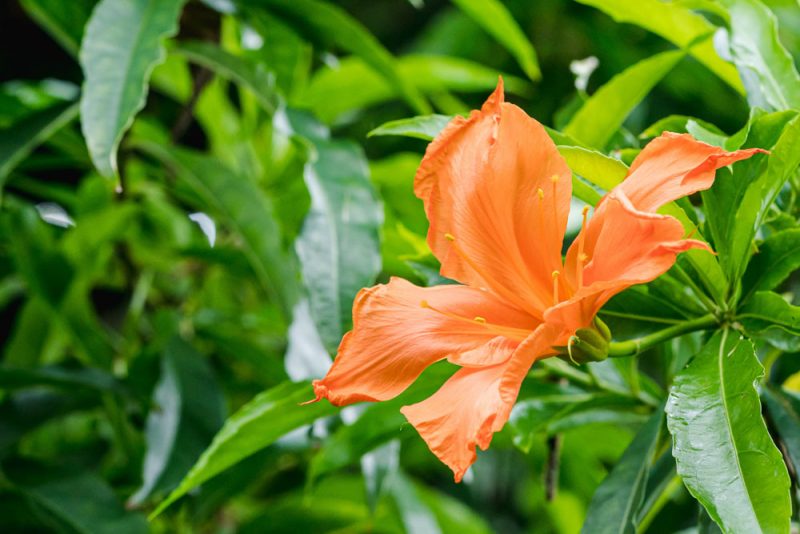Erblichia’s a Flower, But Only So an Hour
Kristine Paulus is the Living Collections Information Manager at The New York Botanical Garden.

Erblichia odorata during its brief but beautiful bloom in the Haupt Conservatory
If there isn’t a txt-speak acronym for “fear of missing out on a phenophase,” there ought to be one. For botanical superfans, FOMF could be short for “fear of missing flowers.” The sometimes fleeting ephemerality of flowers is felt strongest in spring, when the horticultural clock appears unusually accelerated, with the seasonal cycle of changes happening at warp speed. If you blink, you just might miss some of your favorite azaleas, lilacs, peonies, or any number of other precious plants.
Not all plants reliably flower every year, and when they do, they can take us by surprise. The butterfly tree, Erblichia odorata, is one such plant that did so recently. Quietly growing in the Upland Rainforest of the Enid A. Haupt Conservatory for the past seven years, this passion-flower relative delighted staff members and visitors with its large, hibiscus-like flowers. Native to southern Mexico and Central America, this exceptionally beautiful tree was unknown in cultivation until the late 20 century, and today is still very rarely grown. Also known as flor de fuego (“flower of fire” in Spanish), the blooms have a spectacular, glowing orange color and give off a strong fragrance similar to ripe apricots. In their natural habitat they are pollinated by hummingbirds and the seeds are dispersed by ants.
So, when will the wonderful butterfly tree bloom again? Hopefully we won’t have to wait another septennial. Fortunately, flor de fuego also has fantastic glossy-green evergreen foliage, which we can admire in the interim. In the wild, the leaves provide a host for the larvae of the darkened longwing butterfly. And while most of us think of members of the Passifloraceae family as vines, this sizable tree is quite a showy specimen and one of our current favorites.
SUBSCRIBE
Enter your email address to subscribe to this blog and receive updates on new posts.











